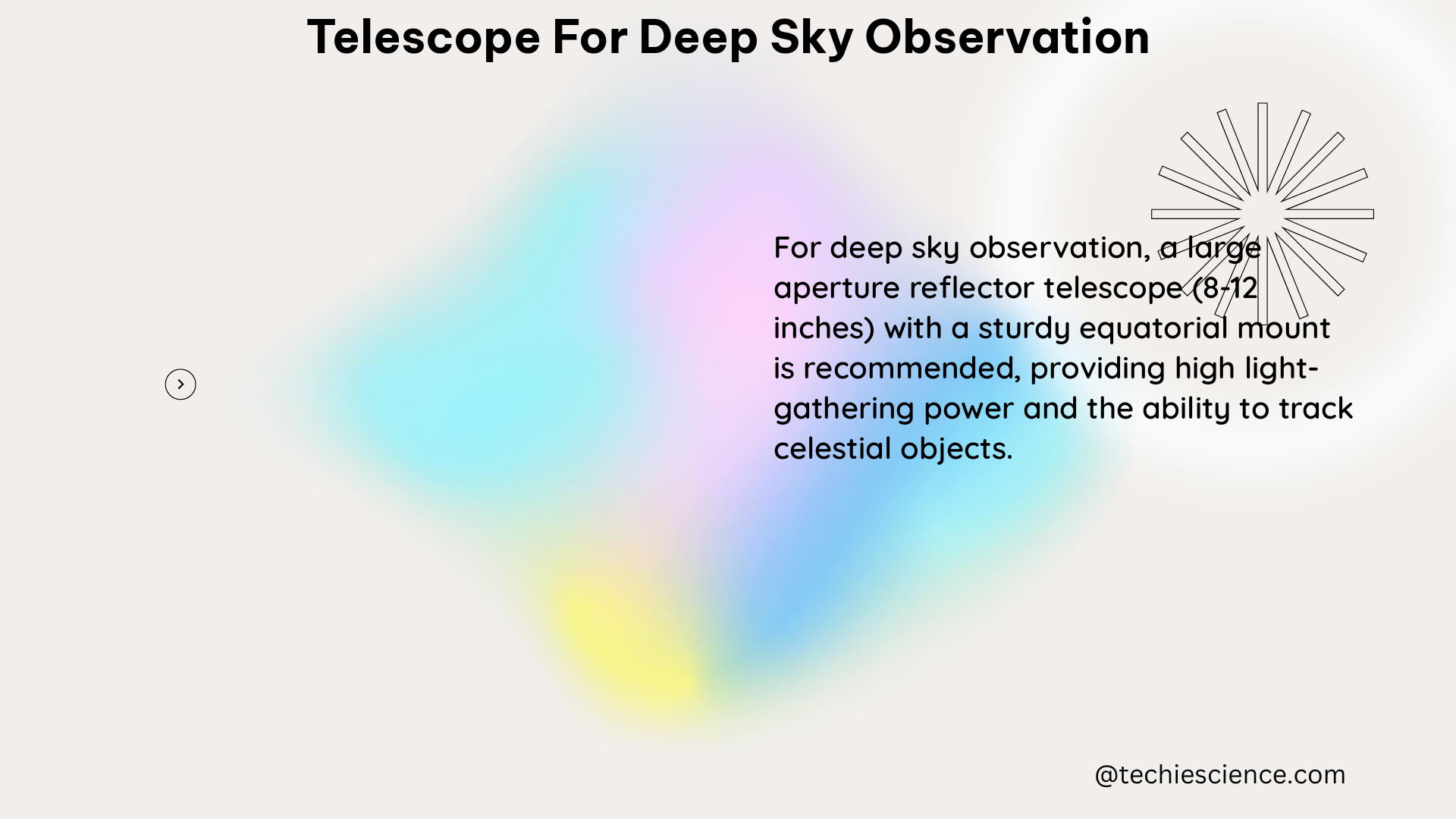Exploring the vast expanse of the cosmos through deep sky observation requires a carefully selected telescope that can capture the faint and distant celestial objects. This comprehensive guide delves into the key factors to consider when choosing the perfect telescope for your deep sky adventures, including aperture, magnification, light pollution reduction, and field of view, all backed by the principles of physics.
Aperture: The Cornerstone of Deep Sky Observation
The aperture of a telescope, which is the diameter of the primary lens or mirror, is the most crucial factor in deep sky observation. A larger aperture collects more light, allowing for the detection of fainter objects that would otherwise be invisible to the naked eye or smaller telescopes. For instance, the Celestron NexStar 130 SLT, with its 130mm (5.11 inches) aperture, is capable of revealing a wealth of deep sky wonders, from distant galaxies to intricate nebulae.
Magnification: Balancing the Needs of Deep Sky Objects

The appropriate magnification level for deep sky observation depends on the specific object being observed. Generally, lower magnifications are preferred for observing larger objects, such as galaxies and nebulae, as they provide a wider field of view and allow more of the object to be seen at once. Conversely, higher magnifications are useful for examining smaller deep sky objects, like star clusters, in greater detail. The Celestron Plossl lens kit, which includes 9mm, 15mm, 25mm, and 40mm eyepieces, offers a versatile range of magnification options for the NexStar 130 SLT.
Light Pollution Reduction: Enhancing Deep Sky Visibility
Living in areas with significant light pollution, such as southeast Florida, can pose a challenge for deep sky observation. Fortunately, the use of specialized filters can help mitigate the effects of light pollution and improve the visibility of deep sky objects. The OIII filter, as mentioned in the Cloudy Nights forum post, is designed to block specific wavelengths of light associated with urban and suburban lighting, effectively enhancing the contrast and visibility of emission and planetary nebulae.
Field of View: Navigating the Vast Expanse of the Cosmos
The field of view (FoV) is another crucial factor in deep sky observation. The FoV is determined by the telescope’s focal length and the eyepiece’s focal length, with a larger FoV allowing for more of the sky to be observed at once. This can be particularly helpful when searching for specific deep sky objects or trying to capture the full extent of larger celestial structures. The pixel scale of a telescope, which is the number of arcseconds per pixel, also plays a role in determining the field of view. For example, the CHI-1 telescope has a pixel scale of 0.62 arcsec/px, resulting in a field of view of 32′ x 32′.
Physics Principles: Unlocking the Secrets of Deep Sky Observation
Understanding the underlying physics principles is essential for optimizing your deep sky observation experience. One key formula is the angular diameter of an object as seen from Earth, which is given by:
θ = 2 * arctan (d / (2 * D))
Where θ is the angular diameter, d is the actual diameter of the object, and D is the distance from Earth to the object. This formula can be used to calculate the angular diameter of deep sky objects and determine the appropriate telescope and eyepiece combination for observing them.
Physics Example: Observing the Andromeda Galaxy
Consider the Andromeda Galaxy (M31), which has an actual diameter of approximately 220,000 light-years. Using the formula above and assuming a distance of 2.537 million light-years, the angular diameter of M31 is approximately 178 arcminutes. To observe this galaxy effectively, a telescope with a wide field of view and low magnification would be ideal.
Physics Numerical Problem: Observing the Orion Nebula
If you wanted to observe the Orion Nebula (M42), which has an actual diameter of about 24 light-years and is located approximately 1,344 light-years away, what magnification would you need to make it appear 1 degree wide in your telescope?
Using the formula, the angular diameter of M42 is approximately 1 degree. To make it appear 1 degree wide, you would need a magnification equal to the telescope’s focal length divided by the eyepiece’s focal length. For example, if your telescope has a focal length of 1000mm and you use a 10mm eyepiece, the magnification would be 100x (1000mm / 10mm).
By understanding these physics principles and applying them to your telescope selection, you can optimize your deep sky observation experience and unlock the secrets of the vast cosmos.
Conclusion
Selecting the right telescope for deep sky observation requires a careful consideration of various factors, including aperture, magnification, light pollution reduction, and field of view. By understanding the underlying physics principles and applying them to your telescope setup, you can enhance your ability to observe and appreciate the wonders of the deep sky. Whether you’re a seasoned astronomer or a curious beginner, this comprehensive guide will equip you with the knowledge and tools necessary to embark on a captivating journey through the depths of the universe.
References
- Make Your Own Space Pictures with a Telescope
- Deep Space Viewing
- Measuring the Angular Diameter of Deep Sky Objects
- Astronomy Notes: Angular Diameter
- Measuring Deep Sky Objects

The lambdageeks.com Core SME Team is a group of experienced subject matter experts from diverse scientific and technical fields including Physics, Chemistry, Technology,Electronics & Electrical Engineering, Automotive, Mechanical Engineering. Our team collaborates to create high-quality, well-researched articles on a wide range of science and technology topics for the lambdageeks.com website.
All Our Senior SME are having more than 7 Years of experience in the respective fields . They are either Working Industry Professionals or assocaited With different Universities. Refer Our Authors Page to get to know About our Core SMEs.